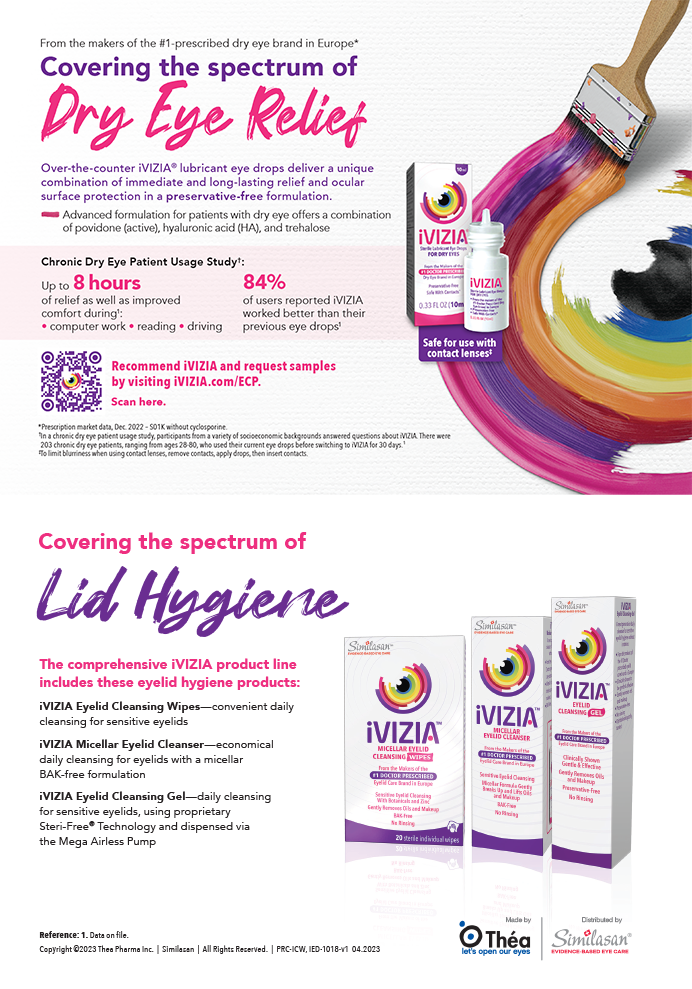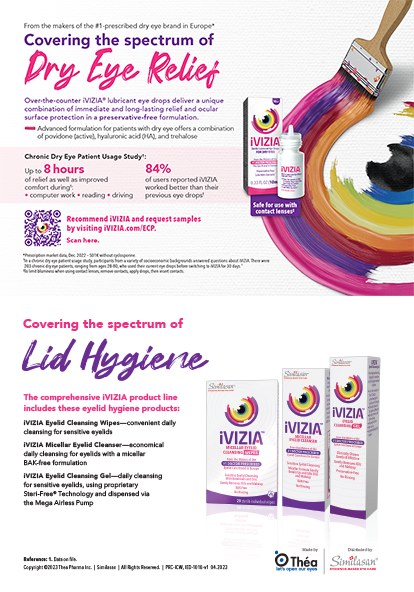Recent improvements in phacoemulsification technology, IOL designs, and instrumentation have made topical clear cornea cataract surgery the primary method of cataract removal for many surgeons.1 One benefit of this technique is quick and painless visual rehabilitation, the demand for which is increasing among our progressive, refractive surgery-minded cataract patients. Because any intraoperative or immediate postoperative pain suggests a complication to anxious patients, minimizing this response is in the surgeon's best interest.
DEMAND FOR REFINEMENT
The population of cataract surgical candidates is expanding thanks to longer life spans and aging baby boomers. This larger patient population naturally has more varied causes of cataracts, including diabetes, systemic or topical prednisolone for autoimmune conditions, and tamoxifen for breast cancer. Although current cataract therapies range from a scleral tunnel incision with full eyelid and retrobulbar injection anesthesia to a clear corneal incision with topical anesthesia, not all of the proposed techniques for cataract extraction and anesthesia work effectively for differing types of cataracts or for all age ranges.
ANESTHETIC TESTING
Toradol (ketorolac tromethamine; Roche Laboratories, Inc., Nutley, NJ), a potent nonsteroidal anti-inflammatory agent, is used in medicine for short-term pain control (up to 5 days) through oral, intramuscular, and intravenous approaches. My colleagues and I conducted a retrospective review of a select group of 122 cataract patients to determine whether intravenous Toradol could minimize or eliminate intraoperative and early (within the first 2 to 3 hours) postoperative pain.
METHODOLOGY
My staff and I performed bilateral cataract surgery on this group of patients, without Toradol on the first eye and then with the drug when we operated on the second eye 2 to 3 weeks later. For their first eye, all patients underwent routine temporal clear corneal cataract surgery using preservative-free 1.0% Xylocaine-MPF (lidocaine HCL; AstraZeneca LP, Wilmington, DE) in the form of topical drops and 0.3 mL intracamerally. We used no lidocaine jelly or preoperative topical anesthesia. All patients also received light intravenous sedation of between 1 and 2 mL of Versed (Roche Laboratories, Inc) intraoperatively. We performed phacoemulsification using the Sovereign WhiteStar system (Advanced Medical Optics, Inc., Santa Ana, CA) and placed an AR40e Sensar foldable acrylic IOL (Advanced Medical Optics, Inc.) through a final 2.6- to 2.9-mm clear corneal incision. In all cases, we used Miochol E (Novartis International AG, Basel, Switzerland) to constrict the pupil over the optic of the IOL before hydrating the incision with BSS (Alcon Laboratories, Inc., Fort Worth, TX) to assure self-sealing.
Between 2 and 3 weeks after the first procedure, we performed cataract surgery on the patients' second eye. The technique used for this second procedure was the same as with the first, except that during the second operation, each patient received 30 mg of Toradol intravenously at the time of the intraocular injection of Miochol-E toward the end of the procedure.
DATA COLLECTION
My colleagues and I used a subjective patient survey to compare the degree of intra- and postoperative pain that the patients experienced during their first versus second procedure. This survey was given to the entire cohort of 122 patients, and all of the survey participants were between the ages of 32 and 60 (the mean age was 43).
We analyzed the pain ratings from the first postoperative day of each procedure. The survey rated pain on a scale of one to 10; one equaled the least amount of pain, and 10 equaled the greatest. We defined pain as any feelings of burning, discomfort, throbbing, or aching in or around the eye. We excluded foreign body sensation from this description.
After the first procedure, which did not include the use of Toradol, the patients' pain rating averaged 6.4. The average rating for their second cataract procedure, however, decreased to 2.1, which was clinically significant with statistical analysis. We concluded that a single dose of Toradol delivered intravenously achieved clinically significant reductions in pain intraoperatively as well as within the first 2 to 3 postoperative hours after topical clear corneal cataract surgery, and that Toradol therefore may be used as an adjunctive form of anesthesia/analgesia in select cases.
No intraoperative complications occurred with the group of patients reviewed. We placed all IOL implants in the bag, and none of the incisions required suturing in any of the procedures.CHOOSE PATIENTS CAREFULLY
Based on the results of our retrospective review, topical clear corneal cataract surgery with adjunctive Toradol effectively reduced pain in a younger subset of cataract patients. These patients tend to experience more ciliary spasm in the immediate postoperative period once the short-lived intracameral lidocaine effect dissipates. A single intravenous dose of Toradol appears to mitigate this rebound ciliary spasm in younger patients. Each patient received the same amount of Versed for each eye procedure, and any amnesia effect experienced was not clinically relevant. Because Toradol can have a significant associated morbidity rate, the surgeon must thoroughly investigate the patient's medical history prior to using the drug. Contraindications include (1) gastrointestinal disorders such as peptic ulcers, (2) compromised renal and/or hepatic function, or (3) hypersensitivity history to nonsteroidal anti-inflammatory agents in general. Nevertheless, with careful review, Toradol can make topical clear corneal cataract surgery painless for the evolving and expanding population of cataract patients.


